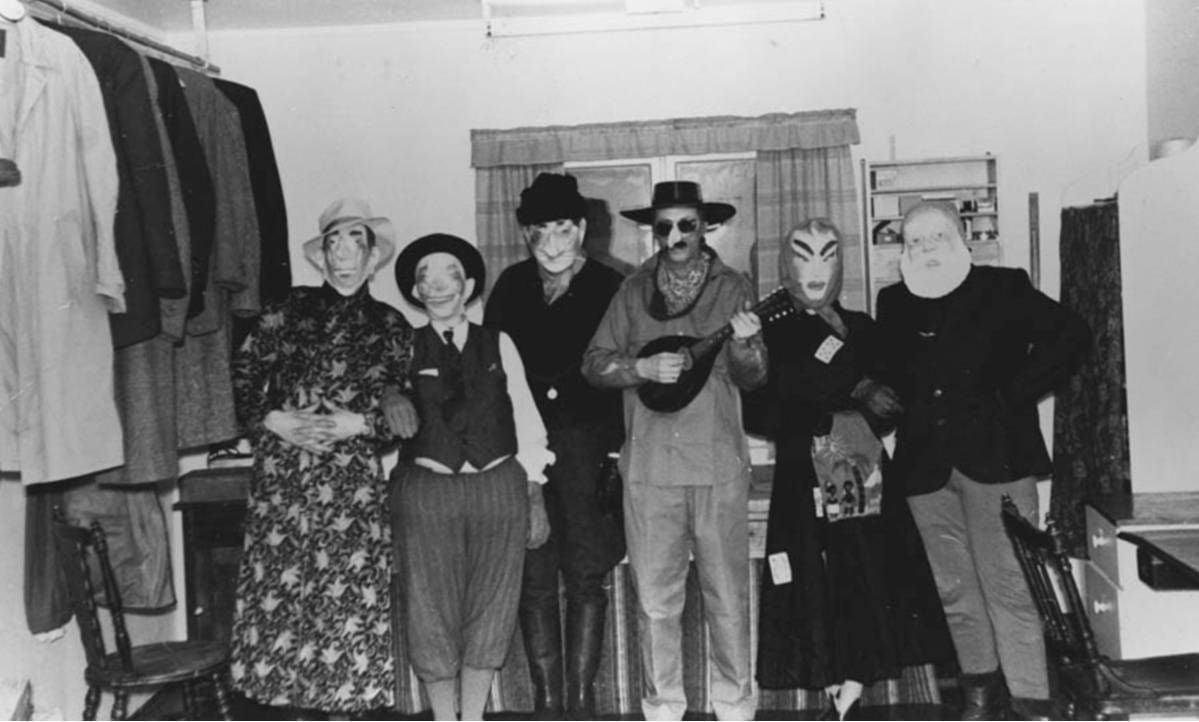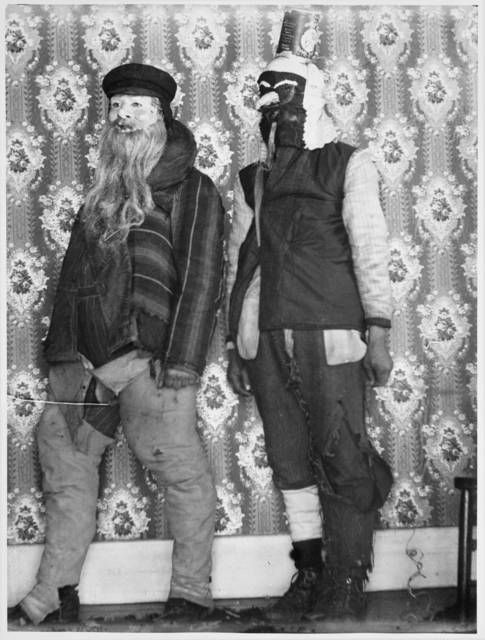Terrific or terrifying? A primer on the Scandinavian tradition of julebukking.

Imagine you are sitting in your favorite cozy chair, enjoying a warm drink and the crackle of a roaring fire when you hear an unexpected knock on your door. You brace yourself against the cold rush of air as you gingerly pull open the door, only to see a group of disguised forms looming on your doorstep.
You've just been julebukked.*
"Julebukking" was brought to the U.S. by German and Scandinavian immigrants. A Scandinavian tradition commonly believed to have originated in Norway, the original julebukking was possibly done to honor the god Thor. A nod to Thor's habit of traveling in a goat-drawn chariot, people would actually carry a goat head from house to house while wearing disguises during the Yule/Jule celebration. Hence the name: "Yule Buck."

A kind of Christmas-themed form of trick-or-treating popular in Scandinavian communities up until the mid 20th Century (and still happening in some communities today), julebukking involved dressing in a disguise with a group of friends and going house to house in your neighborhood. In some communities, julebukkers would sing to their neighbors in exchange for candy ... or alcohol. In other communities, receiving households would be required to guess which neighbors were hidden in disguise - and at least one variation on this tradition also required that, if a gaggle of julebukkers knocked on your door, you would be required to whip up a disguise on the fly and join in on the adventure.
Let's just say we're glad parts of this tradition have fallen away.
In Keeping Christmas: Yuletide Traditions in Norway and the New Land (Minnesota Historical Society Press), author Kathleen Stokker writes that julebukking came to an end in the 1930s an 1940s due to increased mobility and less homogeneous neighborhoods, assimilation, a growing suspicion of strangers and the end of Prohibition (which eliminated alcohol as a motivating force behind the custom).
When we shared this story on Facebook last year, many people chimed in with their own memories of this tradition. Some remembered it by a different name - "Christmas Fooling" or "Ghosting." Others remembered it going strong in their communities up until the 1950s - some even through the 1980s. And still others said it continues in their towns to this day:
"They are still doing it in my town. Not as many as during my parents' day, however. And they didn't get candy, they got drinks. I was scared to death of them."
Did you or your family participate in julebukking? What do you remember? Inquiring minds want to know.
*Disclaimer: This may not be a word.
